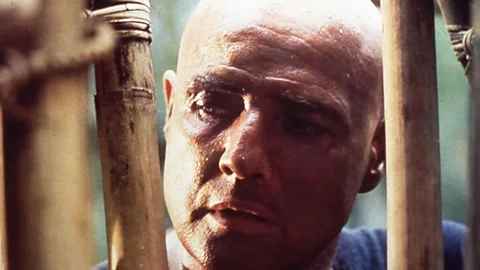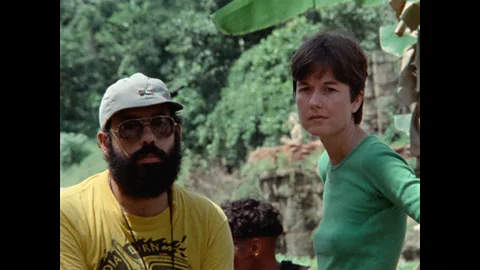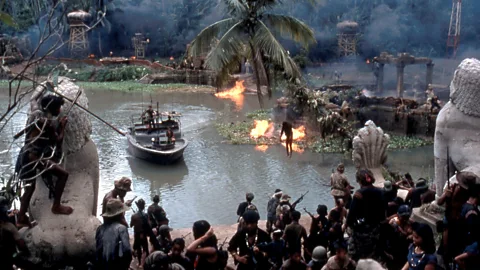The Unmaking and Making of Apocalypse Now: A Descent into Chaos and Cinematic Genius
Francis Ford Coppola’s Apocalypse Now stands as a cinematic masterpiece, a brutal and psychedelic war epic that remains etched in the minds of viewers decades later. But the film’s creation was far from smooth, a chaotic odyssey that mirrors the very conflict it depicts. A newly restored documentary, Hearts of Darkness: A Filmmaker’s Apocalypse, plunges us into the heart of this tumultuous production, revealing a story as compelling as the film itself.
A Typhoon of Troubles: Production Hell in the Philippines
The Initial Promise and its Swift Demise
Initially envisioned as a five-month shoot in the Philippines, the production of Apocalypse Now spiraled into a year-long ordeal. From the outset, problems plagued the production. Harvey Keitel, the original leading man, was replaced by Martin Sheen, who suffered a near-fatal heart attack during filming. A typhoon obliterated costly sets, and various cast and crew members battled hookworm infections. The atmosphere was charged with the constant pressure, fuelled by heavy partying and drug use.

Brando’s Arrival and the Shifting Sands of the Narrative
Adding to the chaos, Marlon Brando, cast as the enigmatic Colonel Kurtz, arrived significantly overweight and unprepared. This necessitated a complete rewrite and reshoot of the film’s ending, further straining the already stretched resources and schedule. The escalating budget forced Coppola to personally finance the remainder of the production, a gamble that could have financially ruined him had the film not ultimately recouped its costs.

The Jungle’s Embrace: A War Within a War
The documentary vividly portrays the oppressive conditions endured by the cast and crew, a microcosm of the Vietnam War itself. Chas Gerretsen, a Dutch war photographer who spent six months on set, remarks on the striking parallels between the film’s production and his experiences in actual war zones. The relentless humidity, the mud, the incessant rain – all created a crucible of hardship and tested the limits of human endurance.
Personal Accounts of a Brutally Beautiful Experience
Damien Leake, an extra in the film, describes the intense humidity as “like a wet mop,” recalling the unsafe water, the ubiquitous geckos, and the unrelenting, biblical rains. Yet, alongside these hardships, he also highlights his profound connection with the local Filipino people, an experience that stands in stark contrast to the disintegrating production around him.
The crew’s longing for home, a common thread among those far from their loved ones, resonated deeply with Gerretsen. He noted the pervasive homesickness, epitomized by one crew member who repeatedly travelled to Manila just to watch planes departing for America. The isolation and alienation further mirrored the psychological toll of war.
Coppola’s Creative Struggle: Doubt, Angst, and Triumph
The documentary reveals Coppola’s own personal torment, his struggle with the film’s ending, and his self-deprecating humor in the face of insurmountable challenges. The audio recordings of Coppola’s intimate reflections, captured by his wife Eleanor, provide an incredibly personal window into the creative process. These raw, unfiltered moments show the doubt, the worry, the sheer angst at the heart of artistic creation, particularly when faced with such immense adversity.
Despite the turmoil, Coppola’s cast remained steadfast, driven by his collaborative spirit. Leake recalls the trust and freedom Coppola granted his actors, allowing them to shape their roles before he molded the final product. This commitment fostered a resilience that ultimately sustained the production.
Hearts of Darkness: A Documentary’s Legacy
Fax Bahr, one of the directors of Hearts of Darkness, describes the immense challenge of distilling 80 hours of footage into a coherent narrative. The process itself mirrored the film’s production, complete with its own dramatic twists and turns, including an editor who absconded with the film’s print. Bahr emphasizes the documentary’s role in deepening the viewer’s understanding of Apocalypse Now, providing crucial context to fully appreciate the film’s depth and complexity.
The restoration of *Hearts of Darkness* offers a crucial insight into the chaotic, almost mythic, process of making one of cinema’s most enduring masterpieces, a testament to the film’s enduring power and the human resilience that fueled its creation.

Hearts of Darkness: A Filmmaker’s Apocalypse is now playing in select cinemas and available on 4k Blu-ray.






